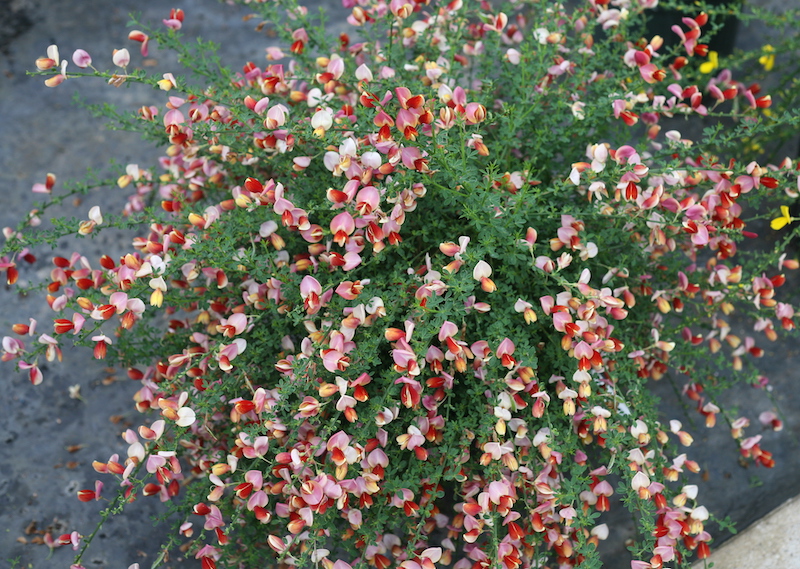Scotch Broom can be successfully grown in large containers; however, due to their mature size, they aren’t well suited to sharing space in crowded mixed containers. Scotch Broom varieties are fragrant, drought and salt tolerant, so place them in an area where they can be enjoyed, on a patio, deck, near entrances, walkways, or any place with ample sun for this lovely flowering shrub to shine.

Planting Scotch Broom in Pots
Select a container that has at least a 24-inch opening to accommodate this shrub’s vessel shape reaching over 3-4 ft. The container has to have ample drainage holes, as Scotch Broom isn’t fond of soggy soil or wet feet. Select well-draining potting soil and add sand or gravel if drainage is slow. Scotch Broom thrives in full sun locations, so select a sunny spot where it will receive at least 6 or more hours of direct sunlight per day. Adequate sunlight is important for enhanced blooming and developing a sturdy shape.
Best Soil For Scotch Broom in Pots
Scotch Broom thrives in poor, sandy soils once plants reach maturity. Select a soil mix that is well draining with a slightly acidic pH, or you can also use a potting mix and add a bit of sand, small gravel, or orchid bark to assist in draining. Plant in a container that has plenty of drainage holes, and avoid covering the holes with rocks or clay shards. Use screening over the drainage holes instead, so excess moisture flows freely out of the bottom of the container.

Caring For Scotch Broom in Planters
Scotch Broom will do well in containers as long as you provide them with the right growing requirements. Place the container on a sunny deck, patio, or location where it will receive at least 6 or more hours of direct sunlight daily. Scotch Broom prefers a dry sunny location. Water Scotch Broom when the first few inches of soil are dry to the touch; it's best to water deeply and less frequently, rather than shallowly and often.
Watering Scotch Broom in Pots
Water thoroughly after planting, making sure water penetrates the root system. Check soil moisture more frequently when Scotch Broom is planted in containers, particularly during the hottest summer months or in extended periods of drought. Water only when the top few inches of soil feel dry to the touch.

Fertilizing Scotch Broom in Pots
It is not necessary to fertilize Scotch Broom as it grows perfectly well without added nutrients. This is a nitrogen-fixing shrub, meaning it converts atmospheric nitrogen into a form plants can more readily use.
Winter Care For Scotch Broom in Pots
Scotch Broom is cold-hardy shrub that tolerates cold climates down to zone 5. If you are located in the lower end of its growing range, you may need to bring the pot indoors to an unheated but sunny location during the winter. A cool garage, basement, or a breezeway are good locations to allow this perennial shrub to go dormant while protecting the container from cracking due to freeze-thaw cycles. You can also move the container to a more sheltered location outdoors, away from harsh winds, and wrap the container in bubble wrap. Even if Scotch Broom doesn’t require extra protection in your climate, some containers, particularly clay pots, may need to be insulated to avoid cracking during winter freeze cycles.
Growing Scotch Broom Indoors
Scotch Broom is a perennial deciduous shrub that requires a period of dormancy. Due to its size and bright sunlight requirements, it is not recommended to grow Scotch Broom indoors as a houseplant. It disperses hundreds of seeds in the fall from its seed pods, which may not be appreciated indoors. Due to its eventual mature size, with some varieties reaching over 6 ft tall, it is best enjoyed in the landscape.
 |
Author Chris Link - Published 01-26-2023 |
